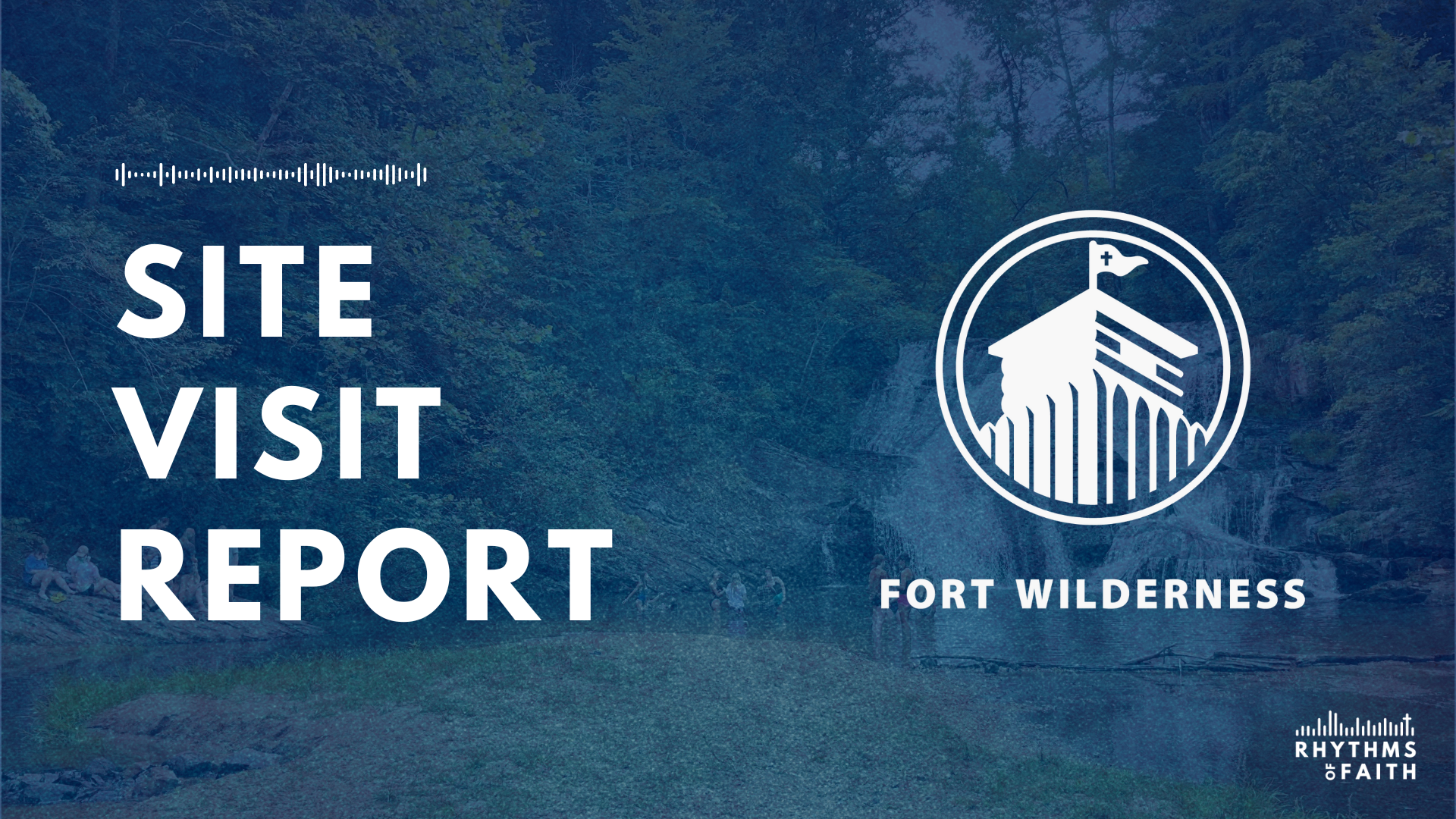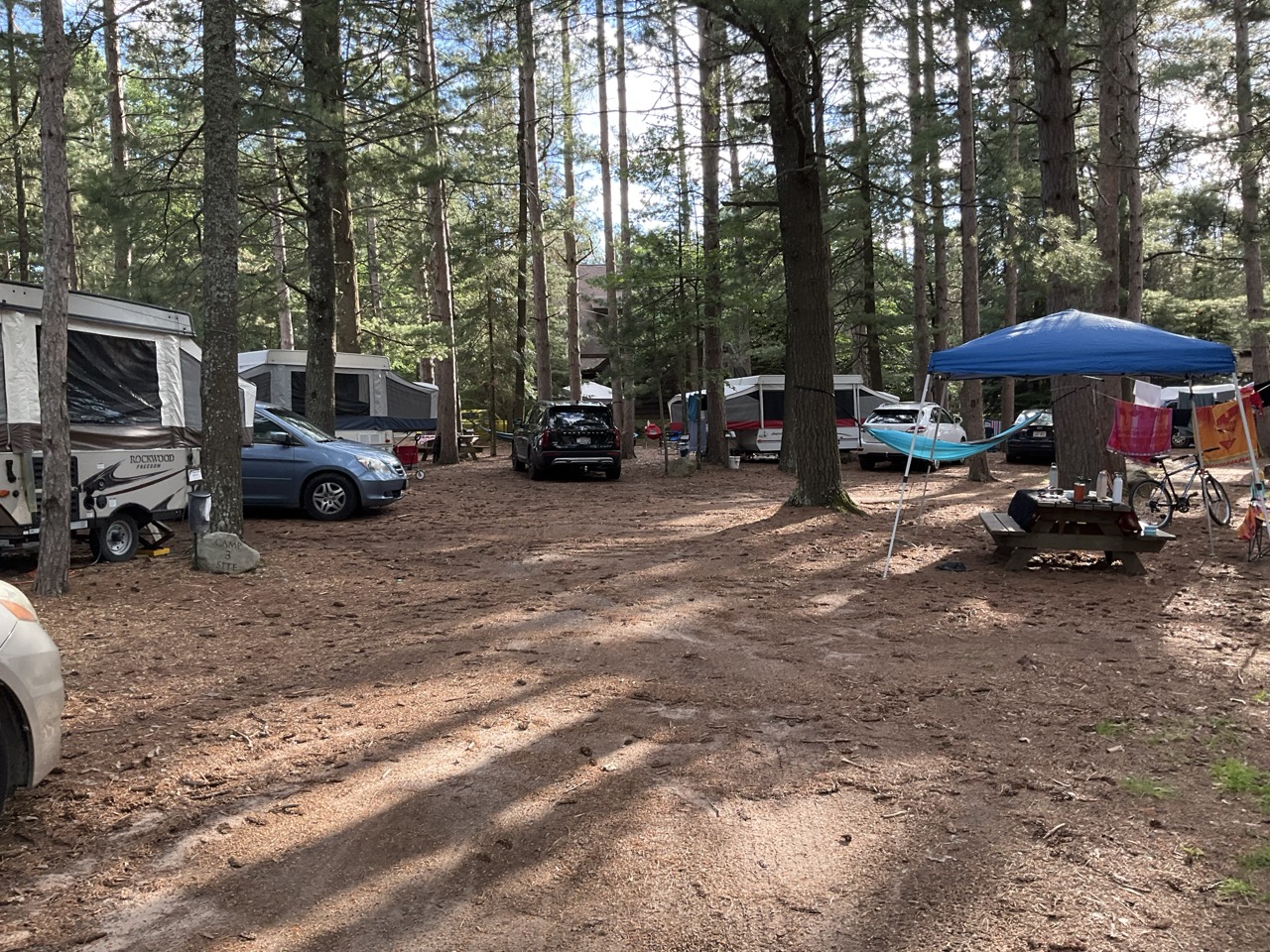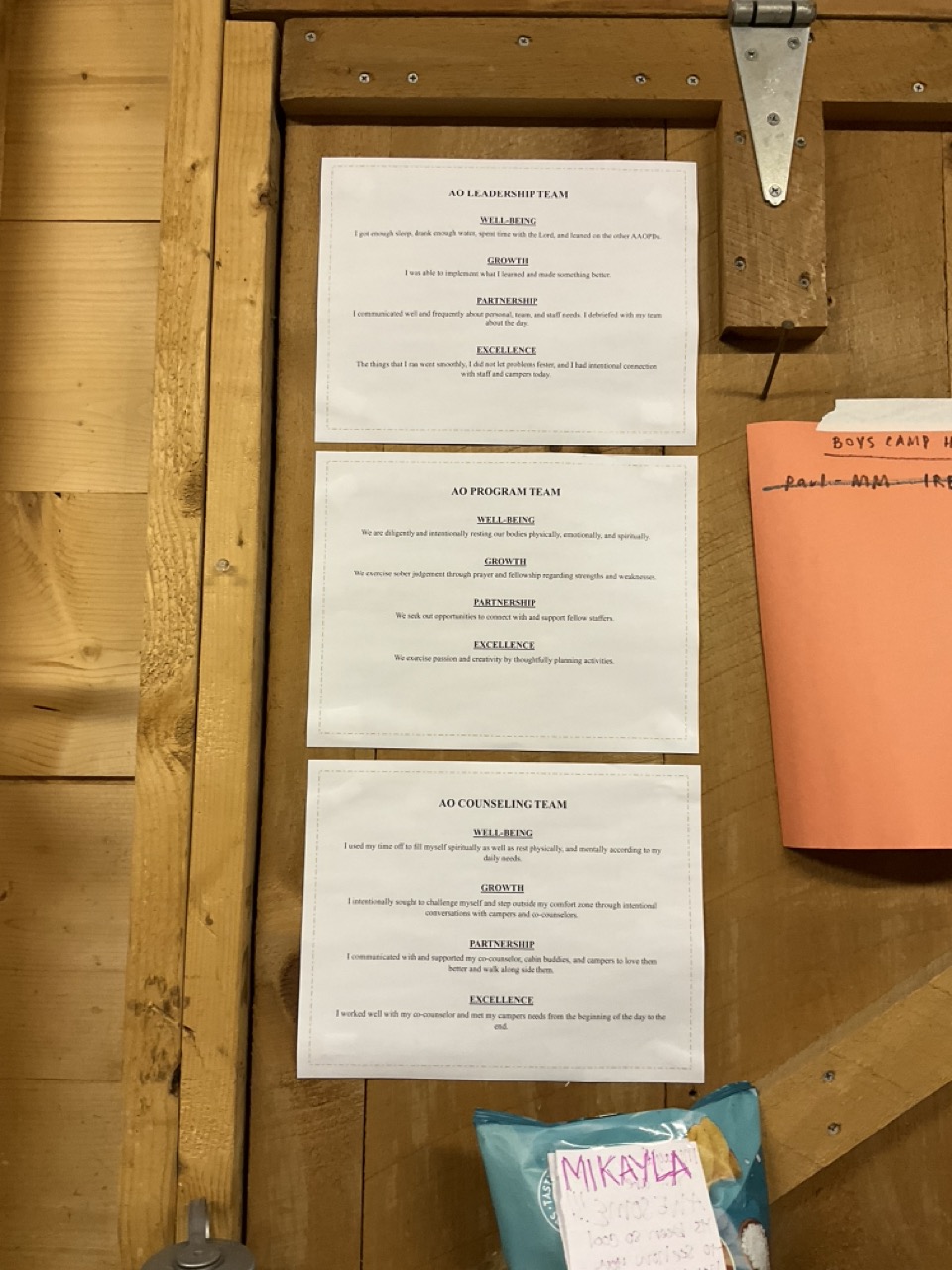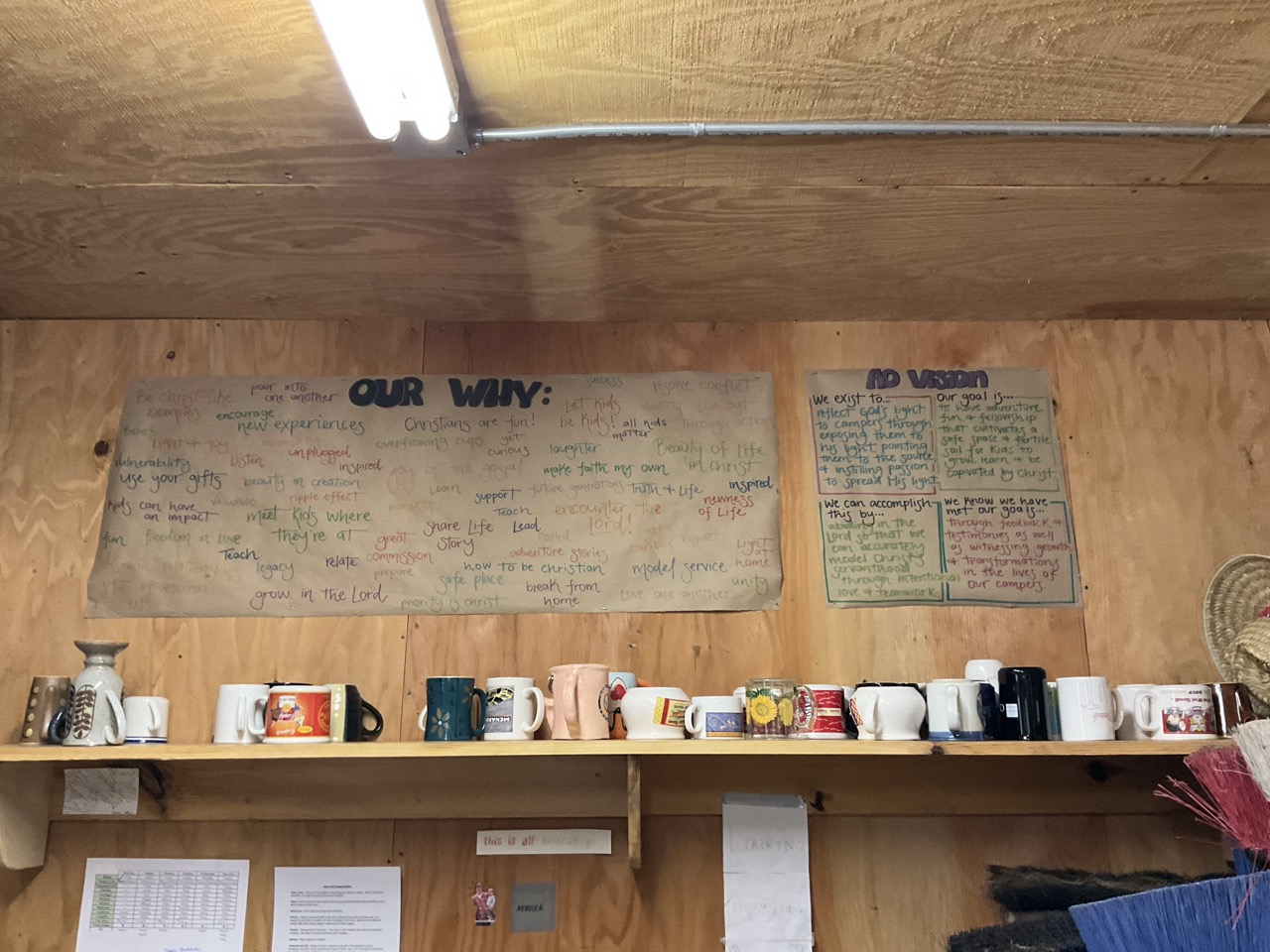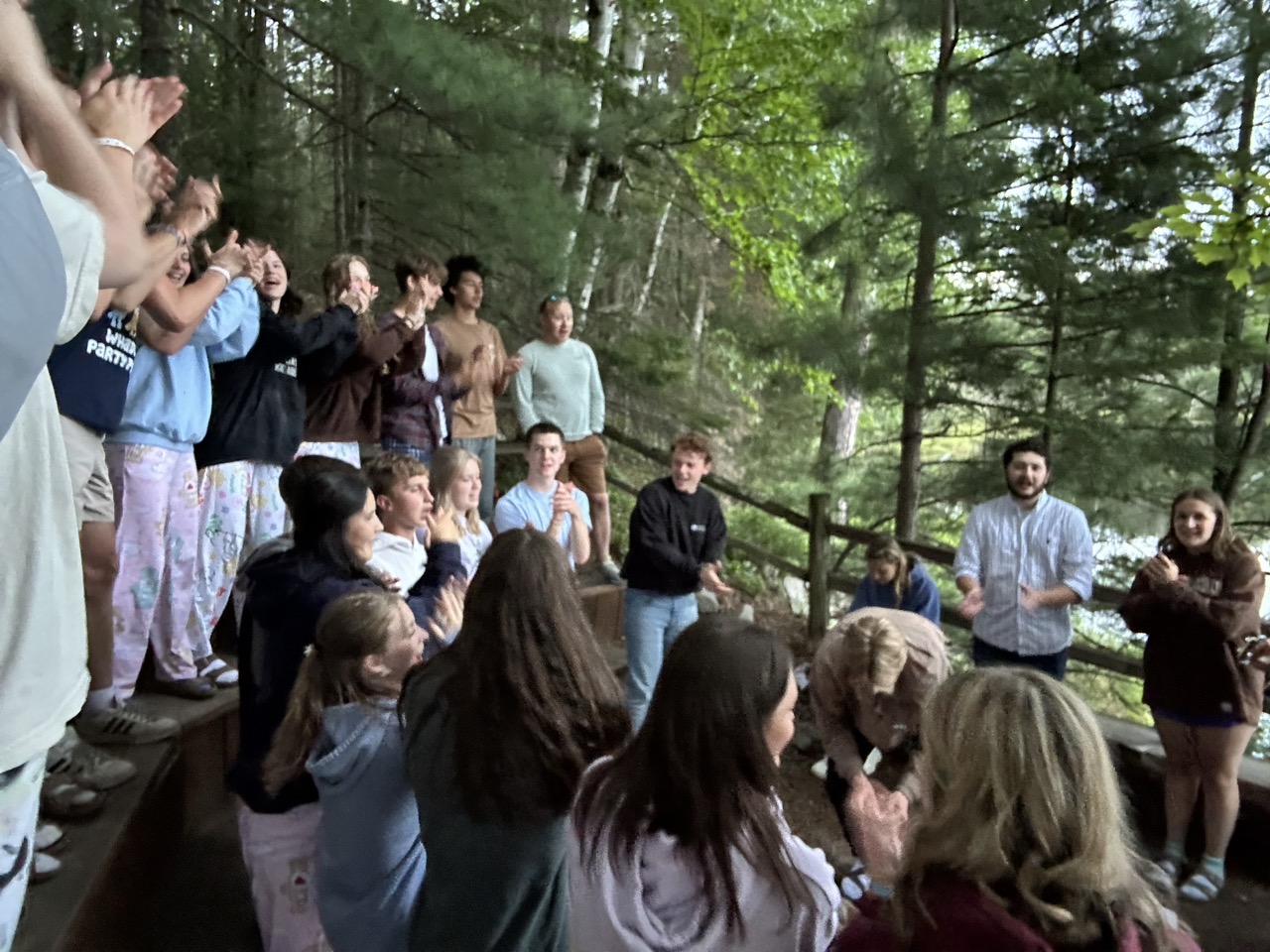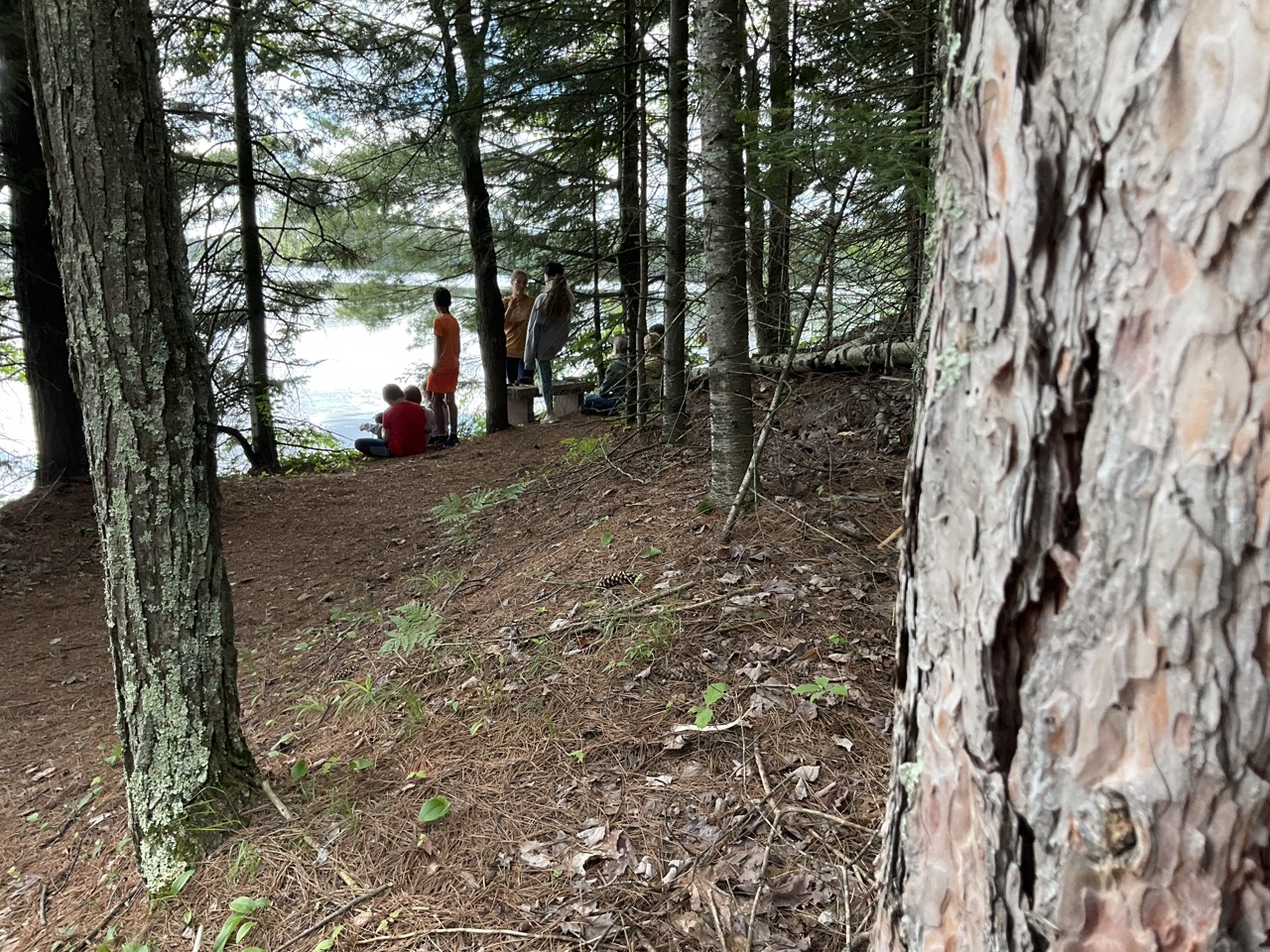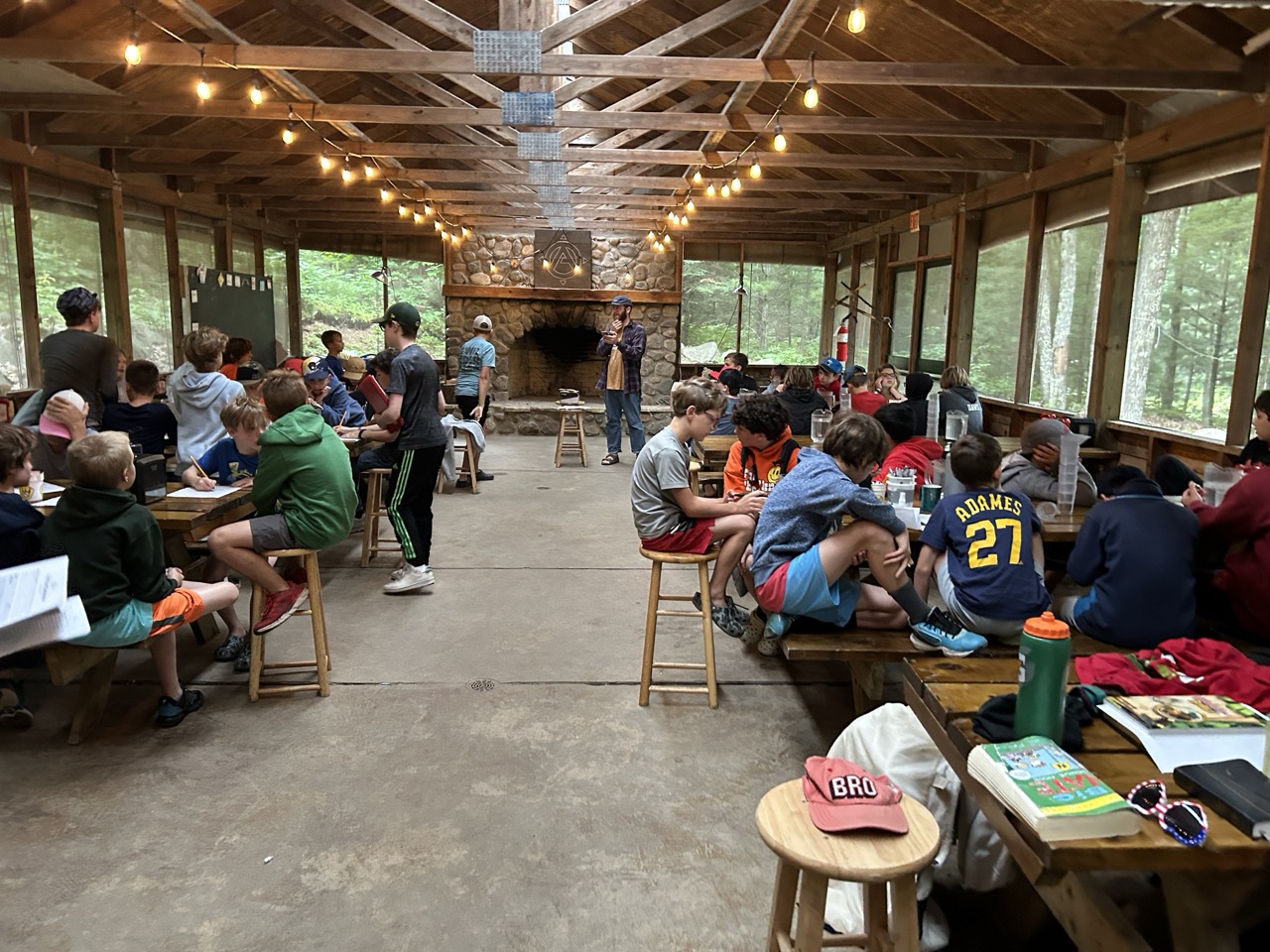Welcome to Fort Wilderness
I arrived at Fort Wilderness around 2:30 on a Tuesday afternoon and was greeted by Kurtis Moss. Within 30 minutes, I launched into a parent focus group, followed by a pastor group with three people present in the room and six pastors online. These focus groups provided a great start to my visit, showcasing the passion people have for the ministry of Fort Wilderness and highlighting some of its unique characteristics. The discussions were fantastic, filled with valuable input, ideas, and stories of significant life-shaping experiences for campers and families. Early themes began to evidence themselves in these conversations.
I was there as part of the Rhythms of Faith Project, which is investigating camps role as a catalyst for family faith formation. Fort Wilderness stands out in our study due to its whole family approach to ministry. They operate full family camps every session on their main site, spanning eight weeks each summer. Additionally, they have a separate site for youth from 3rd to 8th grade called Adventure Outpost and a site for 9th to 11th graders called Leadership Lab. Graduates of the Lab often become volunteers at the main camp or staff in future summers.
Parents spoke highly of the impact that kids camp and family camp had on them as children, and now with their own children. There were even grandparents in the room attending family camp with their adult children and grandchildren who had all participated in Fort’s youth and family camps over the years. It is truly a multi-generational impact.
During my conversations with both groups, it was clear they couldn’t separate the impact of youth camp from family camp and their immersive church involvement. I was struck by the strong partnerships Fort Wilderness has cultivated with churches. The pastors expressed a deep connection to Fort and highlighted the multi-faceted impact it has had on their church community and people.
Site Overview
Fort Wilderness was establish in 1956 as an independent camp in north-central Wisconsin. They are nestled between Spider Lake and state forest land in Oneida County, 30 minutes north of Rhinelander. Their main site is beautifully dense forest in which you can hardly see more than one building at a time. During family camp, tents, campers, and RVs are scattered through the woods between the buildings. Open recreational activities abound but include a water slide, riflery and archery range, sand volleyball court, ever-busy craft shop, extensive horse program with 48 horses, nearly a dozen carpet ball tables, a popular woodshop, and a swim area with a quadra-pod rope swing. Fun abounds for the families. A beautiful Gathering Place (chapel) includes the cozy and inviting Campgrounds Coffee Shop. A newly built outdoor Amphitheater, overlooking the lake, hosts most of their outdoor worship and teaching times during the summer. The grounds are a safe place for kids to roam, families to play, and relationships to form.
The motto of Fort Wilderness is “Developing Relationships for Eternal Impact.” This is truly the DNA of this ministry. People who attend any Fort program are called the “Fort Family.” Their 45 missionary staff intentionally connect with the guests who come. As an example, the Missionary staff, along with their families, host specialty meals (a highlight of my time at camp) that include Wrangler Breakfast, Lumberjack Breakfast, Rustler’s Breakfast, and Men’s and Women’s Breakfast, each offered multiple times each session. I saw the staff parents cooking, hosting, and connecting while their children (5 years old on up) served the bacon, poured the syrup, and the like. They were simple tasks, but the entire family was involved. These families raise support to be part of Fort’s staff, covering 30-40% of the cost of running the organization. They are families on mission together, modeling family life for the thousands that come each year. During the year, Fort also hosts multiple marriage enhancement and family retreats. They are truly ministering to the whole family, with multiple and varied touch points each year.
Adventure Outpost
I started the next morning with a refreshing quiet time along the lake. After a spontaneous breakfast chat with the director of Advancement, Tom Shaw, I drove to Adventure Outpost (AO). Upon arrival, I parked the car near the gated entrance. A staff member greeted me within 50 feet of the gate, asking about my identity and purpose. She mentioned that if guests make it past the wood chips without being recognized, they’ve failed their security training. I praised her with a high five for her vigilant approach to security. She escorted me to the dining hall area, where I met Jordan, the AO Director, and discussed the day ahead. Children were enjoying free time, engaging in activities like carpet ball and gaga ball.
Soon after arrival, the gong sounded for the morning session, quickly gathering everyone to the bleachers. The session on the Armor of God was led by the board chair, with two other board members serving as volunteer counselors for the week. It was boys camp with over 60 campers ages 5th to 7th grade. The teaching lasted 30 minutes and featured a compelling object lesson. One of the leaders (another board member) was dressed in full Roman armor with a shield, boots, and breastplate. The boys were intrigued. They responded well to questions about yesterday’s teachings but lost focus when the discussion moved away from the Armor of God. A few children had brought their Bibles. Afterward, they split into small groups for further discussion. I wandered around the cabins, listening to energetic boys bouncing off the walls in one and fully engaged in discussions in another.
During the morning session, the staff gathered in the kitchen for their daily meeting. Some counselors stayed with the boys, while others joined the meeting. I slipped away to watch. The meeting opened with three questions: 1. How are you doing? Analogies were encouraged. 2. Any God sightings? 3. Prayer requests were shared, fostering strong engagement with lots of energy. There was a highlight for each counselor and leader. By meeting in the kitchen, the food service staff was enabled to participate, enjoying an uplifting time together. The meeting concluded with dedicated prayer time for each request, resulting in sincere and specific prayers.
Tonight, the boys will camp out, giving the female staff, who function as program support and cabin buddies, the night off. Program coordinators made announcements. I walked around the cabins, noticing they were spread out in the woods on hilltops with significant distance between, creating a serene yet secluded atmosphere. Each cabin was simple in design, making it feel like a true getaway to the woods.
I spoke with Jordan about the program’s flow and downtime. Activities were creatively led by program staff, allowing campers to choose daily activities. Each morning, campers signed up for three afternoon activities. Every cabin engaged in daily service projects, emphasizing purposeful engagement. All of this was structured in such a way that the staff get a night off during the week and an hour off per day.
Caring for Each Other
Towards the end of the morning, I headed back to main camp. After lunch, I joined the kitchen staff meeting with about 15 people from the am and pm shifts. Nate, the Food Service Director, initiated the meeting with a “how are you?” question that set a jovial and somewhat relaxed tone. That question pervaded my visit in every staff gathering I was a part of. A good sign and evidence of the heart of Katie, the Human Resources leader for Fort. Responses varied from tiredness to excitement. I noted that half of those present were volunteers and that the group included retirees all the way down to teenagers. Again, intergenerational ministry.
This week, they didn’t have a full slate of volunteers, which posed challenges, particularly with most of the crew appearing to be high school students. They received instructions for tonight’s family camp banquet, with kids in the green tent and adults in the dining hall. Full-time staff and their children pitch in to assist on this big night, which includes an extremely well-prepared meal and a vision session in the Gathering Place. Nate emphasized self-care through adequate rest and hydration, along with adhering to binder directions on meal prep and clean up. Someone from the barn crew shared a note of encouragement, thanking the dish crew for providing moms a week off. Heartfelt encouragement rippled through the group. They addressed process improvements. A staff-led devotion from Hebrews 12 encouraged the group to manage emotions and situations by trusting in God, practicing respectful listening, and authentically sharing. This seemed to characterize the Fort staff culture everywhere I went. The session concluded with a prayer and a chant: “hello pm, goodbye am.” Then everyone got up for work or time off.
Leadership Lab
My next stop was at Leadership Lab, the isolated site for the three-week high school program for 22 students and 6 staff. This site had two camper cabins, a staff cabin with bathrooms for all, and a rustic pavilion with a full industrial kitchen. The building had a long dining table, classroom nook with couches, and a game area with ping pong tables. I could tell it was the community hub.
A private swimming area with paddle boards, canoes, and kayaks was nestled on a small lake opposite Adventure Outpost. I was just in time for their afternoon session on transitioning back home. The next three hours was a rich, deep reflection process on the impact of Lab on this group.
Programming for Ongoing Impact
The transition process involved several movements that together spiraled the group into meaningful conversations and plans for the return home. It started with a summer assistant lab director providing a shaping talk from Ecclesiastes 3:1-8. Engaging questions were raised and the campers were given 10 or so minutes to reflect on them quietly. Then they were sent into mixed small groups of 4-5 campers with one leader to discuss the questions. After about 20 minutes, which did not seem like enough time, there was a large group discussion that summarized the themes. The process concluded with an assignment to write a letter to yourself about their learning and what habits they hope to continue at home. This letter was collected and would be sent home in a few months. It was here that Natalie had inserted my two camper focus groups. This was a great idea. Half the group wrote their letters while half talked with me. Then they switched.
The take-aways and impact are too many to expound on here. Highlights of the time included sharing personal stories, 1:1 conversations, worship nights, daily devotions, fostering community, and experiencing “type 2 fun” — enjoyable in retrospect. The group identified significant personal growth areas, such as engaging in deeper conversations, maintaining consistent Bible reading, disconnecting from technology, prioritizing sleep, and experiencing the power of intercessory prayer. Participants reflected on the positives and negatives of their home environments, recognizing the value of church and youth groups while yearning for deeper friendships and struggling with hidden sins. Plans for growth included increased communication with family, more accountability in group settings, and a desire for deeper conversations. This was evidence of a profound experience. Every time the group prayed, everyone held hands. They were one.
The next day would prove just as fruitful. It began by observing the children’s ministry as part of family camp. This 2-hour program for kids enabled parents to go to a teaching session for adults and included nursery for infants and toddlers and a teaching program for others through 6th grade. It was obvious the leader understood children. Her teaching style was engaging and fun. Her response to distractions was kind and refocusing. After a large group session, the group of about 30 was divided into small groups by age and departed with 2 leaders each for a more focused teaching and activity time outdoors. The curriculum seemed well planned. As I wandered around, there were varying levels of engagement and leader effectiveness. The leader shared with me how she works to train and develop her team of 4 and a rotating group of about 10 volunteers each week. She was purposeful in her process but had a lot to manage. My observations noted that about half of her staff were fully engaged. It made me wonder what children’s ministry training looked like and how she pulled it off with new, young volunteers each week.
Later that day, I had a staff focus group. This was a highlight of my time. The group was made up of two or three people from main camp, two or three from Lab and a handful from AO. There were 10 of us gathered in a little gazebo tucked in the woods. Their average years at Fort wilderness was 12 to 15. This included being a family camper and going through AO and usually Lab. Several had been through TruNorth, Fort’s gap year program, and most had volunteered before becoming summer staff. Everyone in the room had been on staff for three or more years. This conversation will provide many rich insights for our research team.
My time at Fort ended by observing parent check-out, having conversations with the volunteer program and church partnerships directors, and a 2-hour debrief with Kurtis, Student Ministries Director, and Katie, the Chief Human Resource Officer. Both revealed the critical role these efforts play in the ministry of Fort. Fort Wilderness is an exceptional ministry, with a deep impact of the entire lifespan and deep into their church partners. They have much to teach us and to share with the broader camp community.

